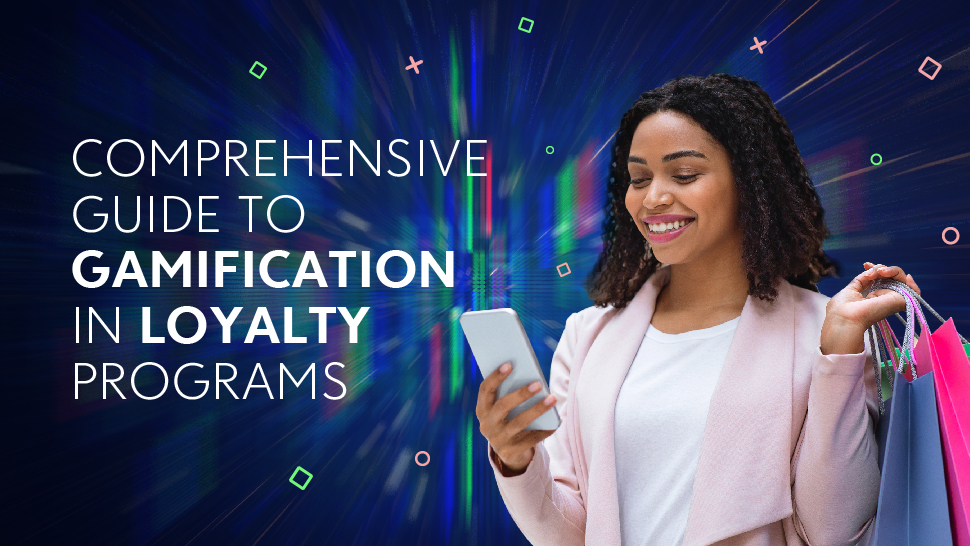- Design industry shaping loyalty programs
- Integrate easily and go live quicker
- Deliver hyper-personalized consumer experiences
Blue Rewards from Al Futtaim Group Shares Loyalty Success Stories and Evolution. Watch Podcast >
Capillary Announces 2nd Annual Captivate 2025 Summit: Transforming Loyalty Management with New AI Tech Read more >

Your customers don’t buy your product.
They buy your promise.
In today’s world of infinite brand options and glocal markets, product differentiation is tough to keep up with, market domination is short-lived, and share of voice ever diminishing. So, how does a brand increase its sales? By transforming its relationship with its customers and making it worth their time and money to become lifetime loyalists.
Some time ago, customer loyalty was measured merely by transactional metrics, such as the share-of-wallet, and the value of lifetime purchases. That was an era of transaction-based loyalty marketing. Brands incentivized customers to spend more in less time through points-for-purchase programs, use-before-it-expires vouchers, and buy-two-get-three offers. It did help in fetching more revenue, but it lacked a holistic approach. Mostly, it saw customer value in the moments of purchase, which looked more like dots across the customer lifecycle and thereby missed the arc of engagement where multiple moments-of-truth existed, and if managed well, could lead to a virtuous cycle of wealth creation.
Today, the paradigm of customer loyalty marketing has shifted from one with a rational, transactional focus to one based on emotional engagement.
It has been necessitated in part by the new generation of ‘connected’ shoppers – those highly conscious and vocal about their persona and their ideologies concerning purchase decisions. These digitally connected shoppers have enormous power to influence new purchases – by posting a product review on Amazon, referring the brand to a friend over Messenger, or recommending it proudly through Instagram. And they exert this power not because they want to buy something but because they want to engage, express and emote feelings.
Thus, engagement-based brand loyalty programs that build emotional bonds with your consumers and nurture a relationship of trust and joy become far more relevant in today’s world where every consumer is a potential influencer.
Introduction to Emotional Brand Loyalty
When customers are emotionally loyal towards a brand, they keep coming back, to meet specific emotional needs (as opposed to merely transactional needs) – which may be ideological or social. Take the case of Dove’s ‘real beauty’ philosophy; it doesn’t only sell a bar of soap but reinforces the idea that ‘natural is beautiful.’ Thus it creates emotional bonds with women who ‘like to feel’ the same way. Or take the case of TOMS Shoes, which donates a pair to a child in need for every pair of shoes it sells. Customers who want to make a difference keep coming back to TOMS and ‘feel’ good about it!
There are three shades or ways of emotionally connecting with a brand, better known as the three components of emotional loyalty – Affinity, Attachment, and Trust.
Affinity means ‘I like the brand,’ and is the first step towards a deeper emotional connection. It doesn’t, however, guarantee brand loyalty when given cheaper, or more convenient options.
The second level of emotional loyalty is ‘Attachment.’ The customer feels cared for, and brand interaction is personalized and relevant. There may even be special privileges that keep the customer coming back.
The third and the most potent shade of emotional loyalty is ‘Trust.’ When the brand consistently fulfils its promise time and again, through every touchpoint, it earns emotional loyalty in the real sense.
According to Forrester Research, emotion is the #1 driver of loyalty. A study by Capgemini further reveals that ‘Consumers with high emotional engagement’ buy the brand 82% of the time whereas ‘Consumers with low emotional engagement’ buy it only 38% of the time. That’s interesting to know for marketers. But how is emotional brand engagement superior to transactional incentives in achieving brand loyalty? Let’s delve into the unique benefits of building engagement-based loyalty among your customers:
By associating a reward for non-purchase actions by their customers, such as referrals, reviews, shares, or blogging, a brand can connect with many more customers as opposed to only those who end up making a repeat purchase. Thus, a brand can generate rich conversations around the product, which are long-lasting and serve as an asset for brand image.
When a brand offers its customers a safe and comfortable space to emote and engage, irrespective of whether they ultimately buy a product, it can observe otherwise unknown facts about their behaviour, preferences, aspirations, and find interesting sweet spots for meeting customer needs that are ever-evolving.
A friend in need is a friend indeed. Here we are talking about emotional needs. A customer may want to know more about an item from other users, may wish to speak to the brand representatives, or try a product for free. These behaviors may stem from a need to get assurance, feel secure, or allay any fears about using the product. An engagement-based loyalty program appreciates these needs and thus forges lasting friendships. And not surprisingly, purchases naturally follow, soon after.
Thus, engagement-based loyalty programs facilitate an emotional connection between the brand and its customers. They help you cultivate champions who wear your brand on their sleeve and make it a trusted name among their peers.
Best Practices for Engagement-based Loyalty Programs
While emotional engagement is much more holistic than a transactional one, building a loyalty program based on customer engagement is also much more complicated. Brands have to think about the indirect bottom-line impact of the various ways in which customers may engage with them. It requires a smart approach with the ability to connect the dots between customer interactions and future purchase actions. Let’s discuss some best practices to adopt when formulating your engagement-based loyalty program!
Engagement-based loyalty programs are for the long haul. Hence, the program specifics and execution must fit in with the brand’s vision, long-term goals, and personality. Right from the start, even the timelines to measure the impact of these programs must be longer. A monthly sales target, for example, is a bad idea when assigning objectives to your emotional-loyalty marketing initiatives. Positive word-of-mouth, say over six months or a year, makes much better sense.
It is vital to gauge the performance of engagement-based loyalty marketing to assess the effectiveness and fill any gaps. Each program must have specific goals attached to it – say for advocacy program, it could be the number of positive reviews and impressions received (for those reviews). Similarly, for referral programs, the goals could be ‘the number of referrals generated’ and ‘the monetary value of referral purchases’ that follow.
What’s in it for your customers? While yes, a happy customer would willingly engage with your brand, there is always a cost associated with that for every customer. Some may be hard-pressed for time; others may not have enough motivation. It is, therefore, essential to stimulate them to act by clearly telling them about what they stand to gain on engaging with the brand in specific, meaningful ways.
Meeting the engagement criteria to be eligible for the rewards must require a healthy degree of effort from your customers. Something too easy to do may attract less than sufficiently motivated customers and something too complicated, may discourage most of them. Also, there must be different levels of engagement achievable gradually, i.e., over some time. It will ensure that your customers do not end up exhausting the various engagement options too soon, and will keep them interested for months if not years.
Last but not least, your engagement loyalty program must have your brand DNA in it. Every customer touchpoint, when rolling out the plan, onboarding the customers, or rewarding them for positive and meaningful engagement, must reflect the promised brand personality, values, and philosophy. Together these will strengthen trust, which itself will further reinforce loyalty.
Together, the above principles will help you design a winning brand loyalty program that has a healthy mix of transactional and non-transactional components and treats your customers as people and not just wallets.
To conclude, as Philip Kotler says – satisfied customers do the best advertising.

December 14, 2024 | 7 Min Read
While agile marketing strategies help brands stay ahead of t

March 4, 2020 | 4 Min Read
In today’s world of infinite brand options and glocal mark

November 7, 2024 | 8 Min Read
By taking game elements like play, competition, transparency